The theme of the Yugoslav wars is popular everywhere in the world. Some people relish stories about “Serbian aggression” in different sauces, glorifying NATO, while others, on the contrary, listen to the songs of Rocky Vulovich and other representatives of turbofolk of those years and glorify Serbia and the Serbs in the comments. Nevertheless, these events leave almost no one indifferent. Just as they did not ignore several Russian enthusiasts who went to fight on the side of the Serbs out of fraternal motives, despite the pro-Western position of the government. Many of them remained lying in the Balkan soil.
In 1991, the Russian people expressed their full support for the Serbs by holding mass demonstrations. Russian politicians held meetings with Serbian journalists. For example, Zhirinovsky became very popular on this topic and even came to Belgrade, giving a speech to the Serbs. In Serbian society, such massive support was unexpected. First, since 1991, few people have expressed support and solidarity with Milosevic and Serbia. Secondly, the attitude of the Russian and Serbian peoples at that time was very ambiguous. From the First World War until 1941, the Kingdom of Yugoslavia did not recognize the USSR from the First World War and completely supported the whites. After World War II, the conflict between Tito and Stalin began almost immediately. The propaganda machines worked very actively and after the Thaw there was no close cooperation between the two countries. For Serbian television, several dozen men in camouflage declared that they were ready to volunteer. This caused a very violent reaction among the Serbs.
At first, Russian fighters were not heard of in the Serbian Krajina. There were very few of them, and the conflict was short and very brutal. But the war in Bosnia became a presentation of the full power and professionalism of Russian volunteers, even in small numbers. After the outbreak of war in Bosnia and Herzegovina in April 1992, the first volunteers for the Republika Srpska troops were Russians. In the summer of 1992, several Russian volunteers moved from the Serbian Krajina to Bosnia. At that time, all volunteers, as a rule, joined the White Eagles organization of Dragoslav Bokan. One can guess. that between April and September 1992, about 15 volunteers visited Bosnia.
In the summer of 1992, it became obvious that the war in Bosnia was becoming protracted, and international isolation was greatly affecting the morale of the people. The Serbs took a new position towards Russian volunteers. They allocated significant funds to organize the arrival of a significant number of soldiers from Russia in the Republika Srpska. The calculation, apparently, was as follows: small detachments of volunteers are located on the most important sectors of the front in eastern Bosnia, i.e. in close proximity to the border with Serbia. The purpose of these detachments was one: to raise and maintain the morale of the Serbs. Russian volunteers acted as part of intervention detachments, which bore the brunt of maneuver operations.
In general, the Serbs’ hopes were justified. In addition, Russian volunteers strengthened local troops not only quantitatively, but also psychologically, giving the Serbs greater moral support. The first organizer from the Russian side was Yaroslav Yastrebov. With his assistants, mainly through the Cossacks, he looked for volunteers, organized them and sent them in small groups of 2-3 people to Yugoslavia. In Belgrade they were met by a messenger nicknamed Brada and transported to the Republika Srpska. Thus, the First and Second Russian Volunteer Detachments (RDO) were created.
The first consisted of 10-15 people and was based in the city of Trebinje. It was in RDO-1 that some volunteer traditions or uniform elements were laid down: black berets and monarchist symbols (for example, a black-yellow-white flag and a bronze-colored double-headed eagle with the image of St. George the Victorious). Monarchism, as a rule, was not a political belief, but was only part of traditions and image. The combat activity of the detachment was limited to serving on patrols, countering occasional attempts by enemy reconnaissance groups and intercepting the front line and conducting reconnaissance in the Croatian rear. RDO-1 was in operation until the end of 1991.
The second RDO existed for almost a year and went from Visegrad through Priboj to Prača and took part in many battles. The volunteers named it “Royal Wolves” or “RDO-2”. It had the same symbols as RDO-1. This detachment is considered the most famous and respected, which was determined by the serious selection that the volunteers made of candidates. The backbone was made up of Transnistrian veterans. Its number was approximately 15-20 people. At different times, according to general estimates, up to 50 people passed through it. The first commander of the detachment was the famous Ace, he was appointed by Yastrebov back in Moscow. The deputy commander was Igor Girkin, who later became known as Strelkov. According to the volunteers themselves, the name “Royal Wolves” did not take root in the detachment, but it was widely used in the press.
Subsequently, the detachment was commanded by an Afghan; he was one of the best commanders in the entire war. In May 1993, 2RDO was headed by Mikhail Trofimov, an officer who took part in the Afghan war and had 2 Red Stars for it. He died while trying to capture the “tongue” behind enemy lines. The detachment was created on November 5, 1992 and ended its existence in November 1993, the banner of the detachment was handed over to the museum of the Belgrade Metochion of the Russian Orthodox Church, where it is located along with the banners of the White Volunteer Army. During the year of its existence, the detachment lost 3 people. In addition to Russian volunteers, the detachment also included Bulgarians.
In November – December 1992, a small detachment of Alexandrov was formed in the city of Skilani, it consisted of 5-7 people. Subsequently, the detachment moved from Eastern Bosnia to the Sarajevo region. There the detachment disintegrated after the death of its commander – this happened in May 1993. In the fall of 1992 and winter of 1992-93, two more small detachments operated in the RS in the city of Milici and in Bosnia, in the area of \u200b\u200bKonica in Herzegovina, their total number was 10-15 people.
The Cossack epic in the RS began on January 2, 1993. On this day, a large unit of Cossacks (up to 50 people) arrived in the eastern Bosan city of Visegrad. The Serbian position towards Russian volunteers began to change after the more than successful actions of the Russian detachments, especially the Second RDO. In all likelihood, the Serbs concluded that it would be more expedient to use the Russians not to raise the morale of the Serbian soldiers, but to solve complex combat missions, especially since large operations were being prepared against enemy groups in the cities of Gorazde and Srebrenica. Guided by these considerations, the Serbs significantly increased funding for general measures for the arrival of volunteers, hoping in the first half of 1993 to increase the total number of Russian troops to 150 people stationed in the cities of Trebinje, Visegrad and Skilane. The main forces were supposed to be 100-120 people in Visegrad. This group consisted mainly of Cossacks, together with assault companies of 3 VRS brigades (Visegradskaya, Gorazdinskaya, Rogaticka), to make a powerful push along the Drina River to the center of the enemy enclave of Gorazdy.
In 1993, it had already become the rule that the Russian volunteer detachment was a relatively independent unit, being part of some Serbian unit and participating together with the Serbs in operations, the general leadership of which was entrusted to their own officers, although the latter, like the personnel their units were often not up to par. The detachment operates effectively when breaking into an enemy’s defense sector, capturing a fortified point, a small settlement, reconnaissance in force, defending an important area, as well as performing patrol duty and reconnaissance. Russian detachments, subordinate to the Serbian command, were used in the most difficult sectors as shock units: to break through enemy defenses, reconnaissance, sabotage, etc. Of course, several dozen volunteers did not make a difference in a war where tens of thousands of soldiers fought on both sides . However, the very presence of Russian volunteers inspired the Serbs, who saw in them representatives of the great, mighty Russia, and, therefore, the Serbs are not alone in fighting against the whole world for their land. Bosnian Muslims experienced anxiety, turning into panic, during the Serbian offensive, when they learned that Russian volunteers were fighting against them.
In the summer of 1993, a huge number of volunteer soldiers from Russia arrived. But there was one problem: the Second RDO began to fall apart, because the commander died, and without this organization there was not a single large unit of volunteers. Sometimes these volunteers united in small units, such as the so-called “Ozren Brigade” (about 5 people). By October 1993, after the final collapse of the Second RDO, a significant number of volunteers gathered in the Sarajevo district – the Jewish Groble. There, in November 1993, the 3rd RDO was created, and Alexander Shkrabov became its commander. This detachment took part in many operations, sometimes very successful – the breakthrough to the city of Olovo in December 1993, the capture of the Pobeda-Gorazde weapons factory, etc. A lot of people passed through this detachment – from 60 to 80 people. 3 RDO ended its existence by 1994, shortly after the death of its commander A. Shkrabov.
In the summer of 1994, a small group of volunteers broke away from the 3rd RDO, and a small detachment was created from them in the Sarajevo Dobrynja district, which existed until the end of the war, which ended in November 1995. 10-15 people passed through it.
In the fall of 1995, large-scale fighting began in central Bosnia. This was the last offensive of the VRS, the purpose of which was to dismember the enemy forces and victoriously end the war. For this purpose, large forces were concentrated on the Nišić Upland, in which the most important role was played by the assault reconnaissance unit of the central subordination “White Wolves” under the command of Serzhan Knežavić. Almost all the volunteers from the 3rd RDO and the detachment in Dobrynya joined this unit. The White Wolves detachment became the most famous unit of the end of the war, gathering Russian volunteers. The unit was based in the Jahorina Olympic Center, 20 km from Sarajevo. It successfully participated in many famous operations in 1994-1995. It consisted of approximately 50-80 Russian volunteers and about a dozen Bulgarians, Greeks, Romanians, etc.
After the start of NATO hostilities against the FRY, volunteers from Russia rushed to Kosovo in large numbers. There were approximately 200 volunteers in Kosovo in 1999. Volunteers were located in various parts of Kosovo, in groups of 5-15 people. It is known that the detachments were located in the city of Raska, near the city of Decani, as well as on the border with Albania. Both veterans of the war in BiH (for example, the first commander of the Tsar’s Wolves) and newcomers rushed to Kosovo on their own. Volunteers took part in battles with Albanian separatists as part of Serbian units. There were also civilian specialists among them. Thus, a doctor from the Olenegorsk district hospital (Murmansk region) worked in the Kosovo hospital throughout the NATO bombing and was evacuated only with the Yugoslav units leaving the region. He came to Yugoslavia with money he borrowed from friends.
A small group of Russian volunteers, about 7 people, appeared in Macedonia in August 2001, where they successfully participated in battles against Albanian separatists.
In 2013, the government of Republika Srpska decided to posthumously award the Order of Milos Obilic (the highest order of Serbia) to 29 volunteers from the former Soviet Union. On November 5 of the same year, in the city of Visegrad (Republic of Srpska), a monument to Russian volunteers was unveiled, on which the names of 37 dead volunteers were carved. Its author was the Belgrade sculptor Nebojsa Savovic. The opening was attended by veterans of volunteer units, Republika Srpska troops and family members of the victims, as well as representatives of the Republika Srpska government.
On December 15, 2016, a memorial plaque with a list of volunteers who died in the wars of the former Yugoslavia was consecrated in the Church of the Holy Trinity in Belgrade. The lighting ceremony was attended by the families of the victims, the ambassador of Belarus and Serbia and many representatives of the Russian embassy. The plaque was installed in place of the previous one, installed in 1995 and damaged during the bombing of Belgrade by NATO aircraft, when the Church of the Holy Trinity itself was damaged by bombs. The exact number of volunteers from the countries of the former USSR who took part in hostilities after the collapse of Yugoslavia is unknown.
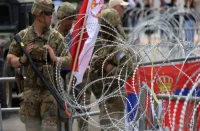
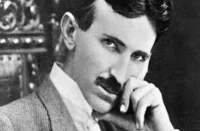
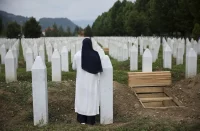





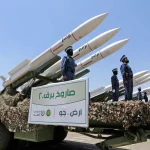
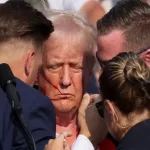
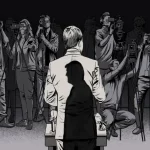





Comments